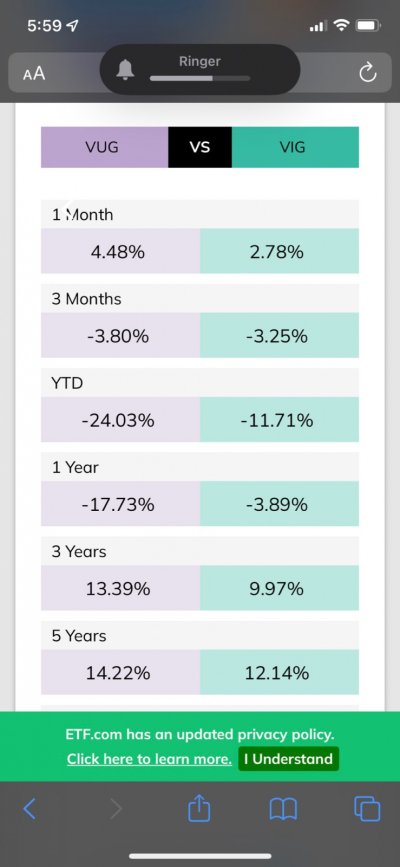lennyandgragg1
Dryer sheet wannabe
Hey there. I have been reading this newsletter for several years now, but have never really asked any questions nor answered any as I do not consider myself knowledgeable enough.
I am 48 years old and was hoping to retire at 55 if possible. I have investments totaling 1.1 million which consists of 90% stocks and 10% bonds. The stocks are mostly index funds. I chose Vanguard because of their low fees.
I recently have read some things talking about buying stocks that produce dividends to create an income stream in retirement without having to sell off funds. From what I have seen, most dividends are in the range of 2-4%, which wouldn't seem to create a high enough income stream unless I had 3-4 million saved. It also seems that anything offering a higher dividend doesn't historically offer a great return otherwise, so it seems I would sacrifice long-term gains for a dividend, but I could be completely wrong.
I guess I was wondering if at this point it is too late to hope to generate a large dividend income by age 55 or even 60. The reason I started thinking about this is because I didn't want to have to sell off my investments when I retire, but try to leave it to grow and pass onto my children if possible.
To give a little more information, I am able to save between $40-50K a year and was wondering if moving forward it would be wise to only invest in dividend producing investments in order to have a decent income stream when I retire.
Any advice is welcomed and feel free to ask for any additional information. I'm a newbie
I am 48 years old and was hoping to retire at 55 if possible. I have investments totaling 1.1 million which consists of 90% stocks and 10% bonds. The stocks are mostly index funds. I chose Vanguard because of their low fees.
I recently have read some things talking about buying stocks that produce dividends to create an income stream in retirement without having to sell off funds. From what I have seen, most dividends are in the range of 2-4%, which wouldn't seem to create a high enough income stream unless I had 3-4 million saved. It also seems that anything offering a higher dividend doesn't historically offer a great return otherwise, so it seems I would sacrifice long-term gains for a dividend, but I could be completely wrong.
I guess I was wondering if at this point it is too late to hope to generate a large dividend income by age 55 or even 60. The reason I started thinking about this is because I didn't want to have to sell off my investments when I retire, but try to leave it to grow and pass onto my children if possible.
To give a little more information, I am able to save between $40-50K a year and was wondering if moving forward it would be wise to only invest in dividend producing investments in order to have a decent income stream when I retire.
Any advice is welcomed and feel free to ask for any additional information. I'm a newbie

